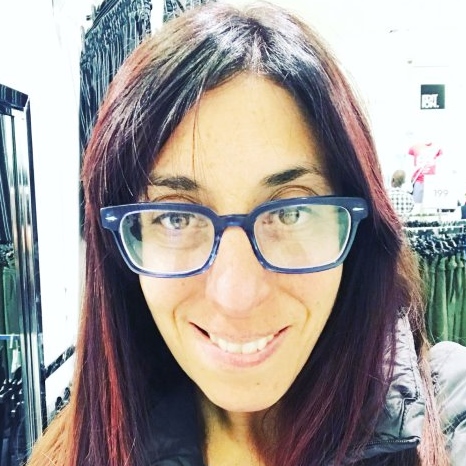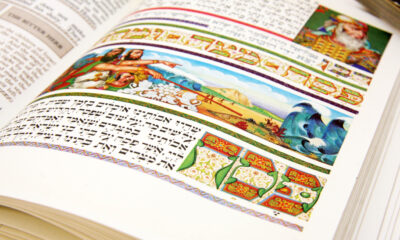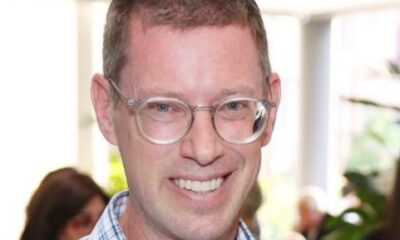
Parshot/Festivals

Walls versus windows on path to freedom
When the beautiful cosmos blooms peak in the Delta and the leaves start to brown and fall from the trees, we know that Pesach is coming. It feels humbling to consider that two years ago, we were in a nationwide lockdown and marked the holiday of Pesach alone in our homes, not knowing what would come of our world.
Last year, with the emerging vaccine and the Delta wave looming on our winter horizon, we marked the holiday with cautious hope, spending some time with family members outside, carefully, responsibly. The Pesach of 2022 again feels different. Many of us have had the milder Omicron variant, and while we still sanitise, eat outside where necessary, and stay away from people if we have any symptoms, Pesach 2022 feels markedly different.
The pandemic put the world into a kind of narrow place, a meitzar for two years. Shul, family gatherings, and simchas were dealt a blow by the terror of an airborne disease. And so, this Passover feels like a renewed Exodus. We’re being liberated from the strain, constraints, fear, and anxiety of the past two years. The question, however, is what next? The COVID-19 pandemic has been a defining moment for our times. But just as Noah left the ark and had to re-envision life on planet earth, we too are invited to ponder what kind of lives we want to live in a post-pandemic world and what kind of selves we want to be.
Our ancient sages also explored the question of how to inhabit newfound freedom. The pivotal moment of the Israelites’ freedom began when the waters of the Sea of Reeds split and the Jewish people crossed over on dry land. We’re told in Exodus, “The waters were for them a wall, on their right and on their left.” In a midrashic work called Pesikta d’Rav Kahana, there’s a debate about what these watery walls looked like. Rabbi Yochanan said the walls looked like a well-sealed lattice, an impervious and opaque net, so as to keep the waters out. A wave of high waters towering over people could be a terrifying spectre. Yochanan renders the waters safe, imagining them as a wall that’s impenetrable and sturdy. In a very unusual move, instead of a rabbi sparring with Yochanan, a female “sprite” enters the walls of the bet midrash. There’s at least 1 500 years difference between her and Yochanan as the woman who sits alongside him is Serach, the daughter of Asher, and granddaughter of Jacob. Serach responds to Yochanan, “I was there, and the walls looked like shining/transparent windows.” As Yochanan and Serach contemplate the moment the Israelites begin their walk to freedom, they imagine the early footsteps of freedom in different ways.
What does freedom look like? For Yochanan, freedom looks like an impervious wall: there’s something terrifying about the water and so as the people walk to freedom, there are strong walls to keep the people on the inside safe and the outside where it belongs. Serach sees windows instead of walls, which enables her to see that which is outside. Her sense of freedom is enhanced by what she sees beyond her own experience. And Serach’s windows are shining, she sees light in the water, a kind of luminescence. For her, freedom is more than just safety from the Egyptians and the waters. Freedom is also about the courage to look to the water, the light, and the enormous fluidity of life that lies beyond.
This year, as we mark our celebration of freedom, we might be inclined to sing triumphant songs about how the pandemic is over and connect it to our leaving Egypt all those years ago. I would venture to call that the way of Yochanan. For him, we would look to our particular Jewish story and reinforce safety nets between us and the outside world. In Yochanan’s view, freedom still requires walls, physical and metaphorical. Freedom is focused on our personal story and where we are, but we don’t look beyond ourselves. We’re grateful to be out of Egypt, feel triumph that we have won, and revel in a feeling of safety.
Walls may have their place, and yet from the Berlin wall to the “almost” wall between the United States and Mexico, we might wonder whether walls allow for our highest freedoms. In South Africa, walls are an interesting motif. They make us feel safe and at the same time, are a constant reminder of the fact that we’re not fully free and that we live in isolated communities, disconnected from each other.
An alternate way to experience freedom is the way of Serach bat Asher. As she walked to freedom, hers was the way of shining windows. A window lets the outside in. As Serach saw windows that connected her to the vast ocean of life, she included the Jewish story and extended beyond it.
If we were to look outside our “windows” and beyond our personal stories this year, we would see so much that’s still not free in our world: we would see the suffering of people in Ukraine; the plight of millions of refugees traveling the paths of our planet, displaced and looking for home. We might see the worsening poverty of our own fellow South Africans; the terrifying spectre of climate change and global warming. We would see Israelis who are suffering another round of terror; and more.
After a two-year pandemic, we might feel too fatigued to extend ourselves to see humanity through our windows. Like Yochanan, we might choose to rely on impervious walls and turn inward, to ourselves and our loved ones. Yet, if we turn the walls into windows, we have the opportunity to connect our Pesach story both to the suffering and the magnificence of our global village. If there’s one thing we’ve learned from this pandemic, it’s that humans and animals alike share an indivisible fate on planet earth. The arc of our Jewish stories interweaves with the story of humanity. Our courage to see windows, not walls, is the path to true and full freedom and is the type of compassion upon which our very survival on this planet depends.
- Adina Roth is a clinical psychologist in private practice and a teacher of Jewish Studies. She runs an independent Barmitzvah and Batmitzvah programme in Johannesburg, and teaches Tanach to adults.










